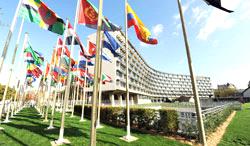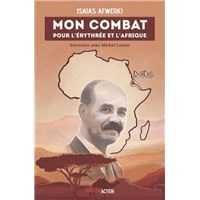July 8, 2017
PRESS RELEASE – Eritrea Delegation at the 41st Session of the World Heritage Committee

Krakow, Poland | 8 July 2017 – Today at the 41st Session of the World Heritage Committee (currently taking place in Krakow, Poland from 7-12 July 2017) Asmara: A Modernist City of Africa has been inscribed on to the UNESCO World Heritage List. This victorious achievement culminates years of research, planning, and campaigning, and is a victory not just for the Eritrean people, but for Africa and the world at large. Asmara, the capital city of Eritrea, is a unique and distinct social environment of modernist architectural design realized in an African highland setting.
The modernist buildings that make up the World Heritage Site of Asmara were built in late 19th and first half of 20th century. The architects who designed these buildings were Italian, and the material with which these buildings were built were a combination of local materials and imported ones. However, the people who built these buildings were undoubtedly Eritrean, and despite the colonial imprint embedded in such buildings, Asmara has been incorporated into the Eritrean identity and their struggle for self- determination, thus being a symbol of pride and achievement for the Eritrean people.
The inscription of Asmara into the World Heritage List is also a symbol of pride for African peoples. What was once an urban-scape of colonial planning that racially segregated Eritreans from their colonizers, it is now a symbol of the decolonization of modernity and heritage, putting indigenous Africans at the center of world heritage while also embodying both colonial and postcolonial African life.
The historical, functional and architectural integrity of Asmara and in particular the subject architectural sites have been well preserved despite the decades of war and upheaval experienced by Eritrea to gain her independence from successive colonizers. The inscription of Asmara on to the World Heritage List will encourage and increase current Eritrean efforts to restore and maintain these buildings, as well as bring awareness to the world of this African modernist treasure. Eritrea started Normative mechanisms to preserve Asmara’s heritage started as early as 2000 with the aim of protecting the unique architectural heritage of the city as well as the nomination process of Asmara as a World Heritage Site. In 2001, the municipality of the city of Asmara established a “Historical Perimeter” and a moratorium on new construction within this perimeter to safeguard the historical and cultural integrity of Asmara. In 2005, Asmara was included on the tentative list for inscription to the World Heritage List. And on 1 February 2016, the State of Eritrea submitted the complete nomination dossier and supporting documents to UNESCO for the inscription of Asmara on the World Heritage List. The Nomination Dossier reflected nearly two decades of collaborative research by professionals in Eritrea and abroad, professionals with a wide range of disciplines.
Asmara’s inscription onto the World Heritage List is the result of all the hard work, research, and mechanisms put in place to inscribe Asmara, Africa’s modernist city, as a site of world heritage. The State of Eritrea is signatory to the 1954 Convention for the Protection of Cultural Property in the Event of Armed Conflict, the 1972 World Heritage Convention, and the 2003 Convention on the Safeguarding of the Intangible Cultural Heritage. Asmara’s inclusion on the World Heritage List for its outstanding modernist architecture and urban planning and its exceptional testimony of the universal aspiration for and attainment of national self-determination goes beyond merely pursuing international recognition for its cultural assets. Asmara’s inscription also represents an opportunity to encourage critical reflections on cultural relations and heritage globally, and to promote stability and prosperity locally.
In addition, Asmara has the potential to contribute to UNESCO’s global strategy of redressing the comparative under-representation of African and modernist sites on the WHL. Head of Delegation, Ambassador Hanna Simon, Ambassador to France and Permanent Representative to UNESCO For more information, Press / Media please contact Mr. Yared Tesfay, member of the Delegation of the State of Eritrea to the 41st Session of the World Heritage Committee, and Director of Media Affairs at the Embassy of the State of Eritrea to the UK & Ireland. Contact details EmbassyMedia@eritreanembassyuk.org


